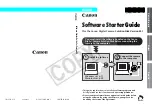
3180
Section 12.3.2, “Comparison Functions and Operators”
Section 8.7.3, “Concurrent Inserts”
Section 17.3.2.11, “Configuring MySQL Cluster
Parameters for Local Checkpoints”
Section 10.1.4, “Connection Character Sets and
Collations”
Section 14.2.7.2, “Consistent Nonlocking Reads”
Section 3.3.1, “Creating and Selecting a Database”
Section 13.6.6.2, “Cursor
DECLARE
Syntax”
Section 13.6.6.3, “Cursor
FETCH
Syntax”
Section 17.4.15, “
ndb_select_all
— Print Rows
from an NDB Table”
Section 4.6.12, “
mysql_explain_log
— Use
EXPLAIN on Statements in Query Log”
Section 4.5.4, “
mysqldump
— A Database Backup
Program”
Section 2.2, “Determining your current MySQL version”
Section 8.8.4, “Disadvantages of Creating Many Tables
in the Same Database”
Section 5.1.5.2, “Dynamic System Variables”
Section 3.2, “Entering Queries”
Section 10.1.7.8, “Examples of the Effect of Collation”
Section 14.2.5.2, “Forcing
InnoDB
Recovery”
Section 1.8.5.4, “Foreign Keys”
Chapter 12, Functions and Operators
Section 8.10.2, “General Thread States”
Section 8.5.3, “How MySQL Uses Indexes”
Section 8.8.5, “How MySQL Uses Internal Temporary
Tables”
Section 8.6.3.1, “How the Query Cache Operates”
Section 14.2.7.9, “How to Cope with Deadlocks”
Section 1.7, “How to Report Bugs or Problems”
Section 14.2.3.1, “How to Use Transactions in
InnoDB
with Different APIs”
Section 9.2.1, “Identifier Qualifiers”
Section 13.2.8.3, “Index Hint Syntax”
Section 12.13, “Information Functions”
Section 2.17.1, “Installing MySQL from a Standard
Source Distribution”
Section 8.7.1, “Internal Locking Methods”
Section C.5.8, “Known Issues in MySQL”
Section 14.7.3, “Limitations of the
FEDERATED
Storage
Engine”
Section 17.1.5.3, “Limits Relating to Transaction
Handling in MySQL Cluster”
Section 13.6.4.2, “Local Variable Scope and
Resolution”
Section 14.2.7.6, “Locks Set by Different SQL
Statements in
InnoDB
”
Section 6.1.3, “Making MySQL Secure Against
Attackers”
Section 8.5.2, “Multiple-Column Indexes”
Section 17.2.4, “MySQL Cluster Example with Tables
and Data”
Section 1.8.5, “MySQL Differences from Standard SQL”
Section 1.8.4, “MySQL Extensions to Standard SQL”
Section 12.9.1, “Natural Language Full-Text Searches”
Section C.5.6, “Optimizer-Related Issues”
Section 8.3.1, “Optimizing
SELECT
Statements”
Section 8.3.2, “Optimizing Non-
SELECT
Statements”
Section 8.2.1, “Optimizing Queries with
EXPLAIN
”
Section 8.3.1.14, “Optimizing Subqueries with
EXISTS
Strategy”
Section 4.6.3.4, “Other
myisamchk
Options”
Section 8.3.3, “Other Optimization Tips”
Section 6.2.1, “Privileges Provided by MySQL”
Section C.5.5.2, “Problems Using
DATE
Columns”
Section 8.6.3.2, “Query Cache
SELECT
Options”
Section 8.6.3.4, “Query Cache Status and
Maintenance”
Section 16.2, “Replication Implementation”
Section 16.1.2.2, “Replication Master Options and
Variables”
Section 9.3, “Reserved Words”
Section E.1, “Restrictions on Stored Programs”
Section E.4, “Restrictions on Views”
Section 3.3.4, “Retrieving Information from a Table”
Section 3.6.7, “Searching on Two Keys”
Section 2.18.2, “Securing the Initial MySQL Accounts”
Section 3.3.4.1, “Selecting All Data”
Section 3.3.4.2, “Selecting Particular Rows”
Section 5.1.4, “Server System Variables”
Section 2.20.5.7, “SGI Irix Notes”
Section C.5.5.7, “Solving Problems with No Matching
Rows”
Section 8.3.2.1, “Speed of
INSERT
Statements”
Section 8.3.1.1, “Speed of
SELECT
Statements”
Section 8.3.2.2, “Speed of
UPDATE
Statements”
Section 18.2.1, “Stored Routine Syntax”
Section 9.1.1, “String Literals”
Section 13.2.9.8, “Subqueries in the
FROM
Clause”
Section 13.2.9.6, “Subqueries with
EXISTS
or
NOT
EXISTS
”
Section 13.2.9.9, “Subquery Errors”
Section 13.2.9, “Subquery Syntax”
Section 8.7.2, “Table Locking Issues”
Section 13.3.5.3, “Table-Locking Restrictions and
Conditions”
Section 14.8, “The
ARCHIVE
Storage Engine”
Section 11.1.6.4, “The
ENUM
Type”
Section 19.4, “The
INFORMATION_SCHEMA COLUMNS
Table”
Section 19.17, “The
INFORMATION_SCHEMA VIEWS
Table”
Section 14.3, “The
MERGE
Storage Engine”
Section 5.2.3, “The Binary Log”
Section 6.2, “The MySQL Access Privilege System”
Section 8.6.3, “The MySQL Query Cache”
Section 8.3.1.3.1, “The Range Access Method for
Single-Part Indexes”
Section 13.2.9.1, “The Subquery as Scalar Operand”
Section 18.3.1, “Trigger Syntax”
Section 1.2, “Typographical and Syntax Conventions”
Section 2.18.1, “Unix Postinstallation Procedures”
Section 2.19.1.2, “Upgrading from MySQL 4.1 to 5.0”
Section 9.4, “User-Defined Variables”
Содержание 5.0
Страница 1: ...MySQL 5 0 Reference Manual ...
Страница 18: ...xviii ...
Страница 60: ...40 ...
Страница 396: ...376 ...
Страница 578: ...558 ...
Страница 636: ...616 ...
Страница 844: ...824 ...
Страница 1234: ...1214 ...
Страница 1426: ...MySQL Proxy Scripting 1406 The following diagram shows an overview of the classes exposed by MySQL Proxy ...
Страница 1427: ...MySQL Proxy Scripting 1407 ...
Страница 1734: ...1714 ...
Страница 1752: ...1732 ...
Страница 1783: ...Configuring Connector ODBC 1763 ...
Страница 1793: ...Connector ODBC Examples 1773 ...
Страница 1839: ...Connector Net Installation 1819 2 You must choose the type of installation to perform ...
Страница 1842: ...Connector Net Installation 1822 5 Once the installation has been completed click Finish to exit the installer ...
Страница 1864: ...Connector Net Visual Studio Integration 1844 Figure 20 24 Debug Stepping Figure 20 25 Function Stepping 1 of 2 ...
Страница 2850: ...2830 ...
Страница 2854: ...2834 ...
Страница 2928: ...2908 ...
Страница 3000: ...2980 ...
Страница 3122: ...3102 ...
Страница 3126: ...3106 ...
Страница 3174: ...3154 ...
Страница 3232: ...3212 ...
















































